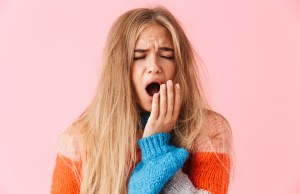
- Major depressive disorder (MDD) is the most well-known of the seven depressive disorders in the DSM-5.
- To be diagnosed with clinical depression, you must suffer from a depressed mood and/or a loss of interest or pleasure (anhedonia) for at least two weeks, most of the day, nearly every day.
- Differential diagnoses for major depression include uncomplicated grief, disruptive mood dysregulation disorder (in children), persistent depressive disorder, and bipolar depression.
- MDD is both an individual problem and a public health problem, and it can be effectively treated in a variety of therapeutic and pharmacological ways.
Major depression disorder (MDD) is a mental health condition that impacts emotional well-being and can cause severe functional consequences in daily life. MDD is also called clinical depression, major depression, and unipolar depression (to distinguish it from bipolar depression caused by bipolar disorder). In Ancient Greece, depression was called melancholia, and was thought to be caused by an excess of “black bile.”
Today’s experts know far more about major depressive disorder than the Greek philosophers did, including its causes, its prevalence, and its most effective treatments. But if any mental health disorder could be considered “classic,” it’s MDD. Though reams of literature have been written on depression over the millenia, the old texts don’t always speak to everyone. This new Thriveworks blueprint for understanding major depressive disorder will give you an accessible overview of the condition, lead you to the latest science, and maybe even provide hope for people experiencing a depressive episode.

What Is Considered a Major Depressive Disorder?
There is only one “major depressive disorder,” though multiple “depressive disorders” exist within the classification system of the Diagnostic and Statistical Manual of Mental Disorders, Fifth Edition (DSM-5), published by the American Psychiatric Society. Depression disorders are also classified more broadly as mood disorders. In addition to MDD, the depression disorders are as follows:
- Persistent depressive disorder (PDD), formerly known as dysthymia, which is chronic depression lasting at least two years in adults or at least one year in children and adolescents.
- Disruptive mood dysregulation disorder, which is a childhood condition characterized by extreme irritability and anger.
- Premenstrual dysphoric disorder, which is a more severe form of premenstrual syndrome (PMS).
- Substance/medication-induced depressive disorder, which can be caused by certain sedatives, alcohol, steroids, antihypertensives, anticonvulsants, and more.
- Depressive disorder due to another medical condition, which can be caused by some metabolic disturbances, nutritional deficiencies, infectious diseases, and more.
- Unspecified depressive disorder, which is diagnosed when someone’s depression doesn’t meet the criteria for any of the above disorders.
The DSM-5 states that although depression disorders may have different causes, endure for shorter or longer periods of time, and occur at different stages of life, they all share this feature: a “sad, empty, or irritable mood, accompanied by somatic and cognitive changes that significantly affect the individual’s capacity to function.”
What Causes Depression?
The origin of major depressive disorder is thought to be multifactorial, which basically means eclectic. For example, you might have inherited genes that make you more likely to become depressed. And/or you might have suffered adversity in childhood. And/or you tend to be more neurotic. And/or you have another mental health condition that increases your risk of having a depressive episode (called a course modifier). So all of those risk factors — genetic, environmental, biological, and psychosocial — can shape your future feelings.
Neurotransmitter systems have also been implicated in depression. Someone with major depression disorder may be experiencing disturbances in their brain’s serotonin, norepinephrine, dopamine, GABA, glutamate, and glycine circuitry. These disturbances might be due to an even higher-level upset in the brain, but the science isn’t clear yet. The important thing to remember is that depression is not your fault. It’s often due to complex factors, not some weakness you imagine in your darkest moments.
Differential Diagnoses for Clinical Depression
“You’re not depressed, you’re just sad.” “You’re not depressed, you’re grieving.” “You’re not depressed, you just need more sunshine.” Though comments like these are extremely unhelpful to a person suffering from what psychologist Rollo May termed “the inability to construct a future,” they might sometimes contain a grain of truth. That’s because loads of other life issues, medical problems, and mental health conditions can be confused with depression. These are called differential diagnoses. Mental health professionals usually try to rule them out before diagnosing MDD. For example:
- Sadness. Depression is a mental health disorder that comes with longer-term functional impairments, while sadness is a human’s natural emotional response to sad things happening. Sadness is not a clinical diagnosis!
- Dysphoria. Depression is a condition, while dysphoria is a symptom.
- Grief. Significant loss can cause devastating sadness, but bereavement differs from depression in that 1) It tends to occur in waves; and 2) Thoughts tend to be preoccupied with the deceased, not self-critical ruminations. But bereavement and MDD can occur simultaneously.
- Bipolar depression. Bipolar depression is the flipside of manias and hypomanias experienced by someone with bipolar disorder (type 1 or type 2 bipolar). If a person experiences both manic episodes and depressive episodes, they don’t have MDD. Though bear in mind that irritability and mania can sometimes look similar.
- Cyclothymia is a mild form of bipolar disorder.
- Adjustment disorder with depressed mood is a temporary condition caused by a maladaptive emotional response to a stressful life event.
- Attention deficit/hyperactivity disorder (ADHD) can sometimes cause depression due to social stigma or functional difficulties. ADHD can also have some overlapping symptoms with MDD, such as loss of interest and distractibility.
- Schizoaffective disorder, which combines symptoms of schizophrenia and a mood disorder.
- Neurological conditions like multiple sclerosis, Alzheimer’s disease, or Parkinson disease.
- Vitamin D, B12, B6, iron, or folate deficiencies.
- Other medical conditions like thyroid/endocrine issues, untreated diabetes, and cancer.
- Disruptive mood dysregulation disorder. In children under 12, symptoms of depression may indicate DMDD.
- Postpartum depression (PPD) is depression that has an onset in the year after your baby is born.
- Persistent depressive disorder is depression that lasts longer than two years.
- Seasonal affective disorder (SAD), also known as seasonal depression, occurs at predictable times throughout the year
Depression also has multiple comorbidities, which means that it commonly occurs at the same time as another mental health condition. For example, eating disorders (anorexia and bulimia), anxiety disorders, and substance use disorders all have high rates of comorbidity with depression. When dealing with co-occurring conditions, mental health professionals typically start by treating the one that’s causing the most functional impairments.
What Are Five Symptoms of Major Depressive Disorder?
The five symptoms of major depressive disorder can vary from person to person. That’s because the DSM-5 lists nine symptoms, but only five need to apply for clinical diagnosis. Here are the precise criteria for major depressive disorder:
- You must have a depressed mood OR loss of interest or pleasure (anhedonia) for at least two weeks, most of the day, nearly every day.
- You must exhibit 3-4 of the following: appetite changes, sleep issues, observable psychomotor agitation or slowing down, excessive fatigue, feelings of worthlessness or profound guilt, cognitive impairments (e.g., poor concentration), suicidal ideation or thoughts of death.
- Your symptoms are causing significant problems.
- You must rule out other causes for these mood changes.
People may also have additional symptoms of MDD, like low sex drive (loss of libido), that aren’t included in the DSM-5 criteria.
The symptoms of major depressive disorder can look different across the lifespan, and across genders. For example, depressed children may start having separation anxiety. Younger individuals tend to sleep more (hypersomnia) and eat more (hyperphagia). Depressed men tend to exhibit symptoms of irritability more than women. And an older adult with depression might be misdiagnosed with cognitive decline instead of “pseudodementia” caused by MDD.
Is Major Depressive Disorder Considered a Serious Mental Illness?
Major depressive disorder is a serious mental health condition that has a high prevalence and carries an elevated risk of mortality. It’s also a leading cause of disease burden in the world, meaning it contributes significantly to health loss and disability in global populations. This makes MDD a critical public health priority.
Clinical depression affects all races and socioeconomic classes equally. It’s more prevalent among women, in rural areas, and in people who lack social support.
On an individual level, depression can wipe out everything that seemed good in the world, all your hope for the future, all the things you liked about yourself. It can destroy relationships, cause you to lose your livelihood, and even drive you to extremes of self-harm. So it’s very serious. But that doesn’t mean it’s not treatable, and that you won’t recover.
How Is Depression Diagnosed?
Major depressive disorder needs to be diagnosed by a clinician. That clinician can be a mental health professional like a therapist, counselor, clinical social worker, or a psychiatrist, or they can be a physician of some kind. Many people with depression first present to their family doctor with physical complaints. For example, they might be experiencing inexplicable aches and pains, weight loss, or digestive issues. Physical symptoms of depression are your body’s way of saying, “I need attention!” So you go see a doctor, and hopefully your doctor will ask the right questions to get you the mental health care you need.
Or you might call a therapist, psychiatrist, or professional counselor who specializes in depression. A therapist will establish trust and rapport, then conduct a clinical interview to gather information about your medical history, family history, symptoms, and more. They will want to know if you know why you’re so miserable. (People with MDD often don’t.) They will want to make sure you are safe and not at risk to yourself or others. You may also receive a physical examination to rule out any underlying medical conditions or additional causes for depression symptoms.
A diagnosis of major depressive disorder might come with further specification based on recurrence of episodes, severity of symptoms, presence of psychotic features, and status of remission.
The following are additional specifiers for depressive episodes:
- With anxious distress
- With mixed features
- With melancholic features
- With atypical features
- With mood-congruent psychotic features
- With mood-incongruent psychotic features
- With catatonia
- With peripartum onset
- With seasonal pattern
If you are diagnosed with MDD, only a physician, a board-certified psychiatrist (MD), or a psychiatric mental health nurse practitioner (PMHNP) can prescribe antidepressant medications or any other pharmaceutical.
Is Major Depressive Disorder Permanent?
If depression were permanent, we’d all be in deep trouble! No, depressive episodes don’t tend to last forever. Most people diagnosed with MDD go into remission. But depression is chronic. MDD recurs in the majority of cases, so it’s important to be prepared. You can learn ways to reduce the severity of future episodes, either with a therapist or on your own. For example, you might work on the following:
- Identifying your triggers
- Developing coping mechanisms
- Finding the right medication
- Challenging your cognitive biases
- Lining up a great clinical team
- Educating your friends and family on the disorder
- Joining a support group
You may not be able to prevent your depression from recurring, but you can be ready when it does. In this way, you can aim to keep impairments to a minimum while you recover.
Major Depressive Disorder Medication and Treatment Protocols
Let’s look at how to treat major depressive disorder effectively. Fortunately, this is something that mental health professionals know a lot about. The first line treatment for MDD is psychotherapy, depression medication, or a combination of the two. Evidence shows that the hybrid approach (pharma + therapy) works better than just doing one or the other intervention.
Depression Medications
The Food and Drug Administration (FDA) has approved the following medications for the treatment of MDD in the US:
- Selective serotonin reuptake inhibitors (SSRIs): fluoxetine (Prozac), sertraline (Zoloft), citalopram (Celexa), escitalopram (Lexapro), paroxetine (Paxil), and fluvoxamine (Luvox).
- Serotonin-norepinephrine reuptake inhibitors (SNRIs): venlafaxine (Effexor), duloxetine (Cymbalta), desvenlafaxine (Pristiq), levomilnacipran (Fetzima), and milnacipran (Savella).
- Serotonin modulators: trazodone (Oleptro, Desyrel), vilazodone (Viibryd), and vortioxetine (Brintellix).
- Atypical antidepressants: bupropion (Wellbutrin) and mirtazapine (Norset, Remeron, Avanza, Zispin).
- Tricyclic antidepressants (TCAs): amitriptyline (Elavil), imipramine (Tofranil), clomipramine (Anafranil), doxepin (Sinequan), nortriptyline (Pamelor), and desipramine (Norpramin).
- Monoamine oxidase inhibitors (MAOIs): tranylcypromine (Parnate), phenelzine (Nardil), selegiline (Emsam), and isocarboxazid (Marplan).
- Other: mood-stabilizers and antipsychotics
Best Depression Therapies for Individuals
- Cognitive behavioral therapy (CBT)
- Dialectical behavior therapy (DBT)
- Psychodynamic psychotherapy
- Strength-based therapy
- Person-centered therapy
- Motivational interviewing
- Acceptance and commitment therapy (ACT)
- Solution-focused therapy (SFT)
- Eye movement desensitization and reprocessing (EMDR)
- Trauma-informed therapy
Other Treatments for Depression
- Light therapy, which can counter the effects of chronodisruption
- Electroconvulsive therapy (ECT), which is the most effective treatment for severe MDD
- Lifestyle modifications in diet, exercise, and sleep routines (think of them as self-care bundles)
- Mindfulness training
- Gratitude practices
- Self-compassion practices
- Building a support system
- Psychoeducation
- Family therapy
- Couples therapy or marriage counseling
Important: If you need emergency help for depression at any time, 24/7, call the National Helpline at 1-800-662-HELP (4357) or the National Suicide Prevention Lifeline at 1-800-273-8255.













